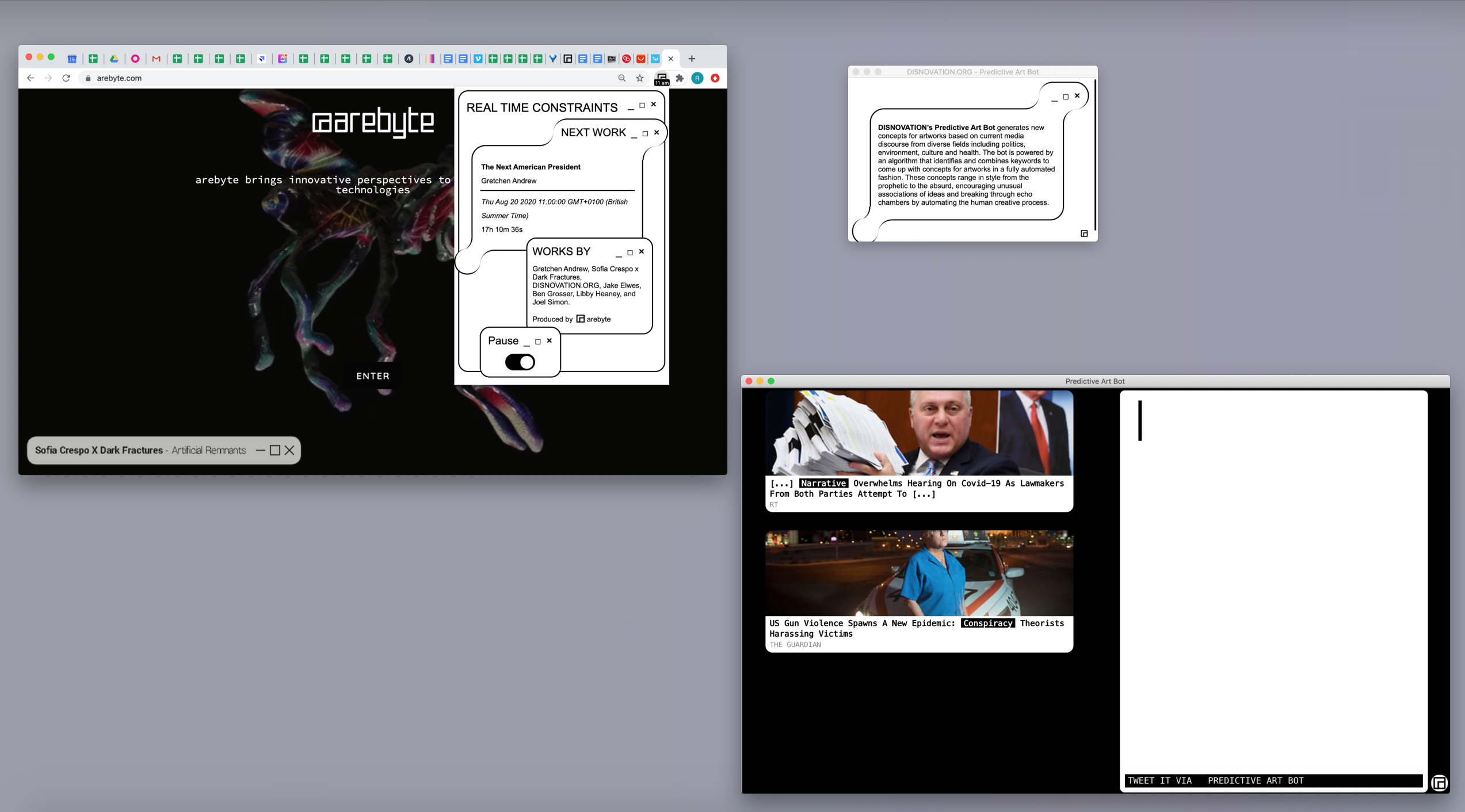Installation View: Hosted (2020) in "Best Effort Network," at arebyte in March 2020. 70-frame animation. Photo: Max Colson.
As 2020 comes to a close, and we mark nearly one year of navigating the effects of COVID-19, we've invited a group of curators and programmers to reflect on how they've evolved their work to meet their mission during these "uncertain times." Previously, we published Paolo Pedercini on LIKELIKE Online. Today, arebyte Gallery's Founder Nimrod Vardi and Curator Rebecca Edwards on their pivot to (more fully) online last spring.
In early March we were busy preparing for our first commission of the year, a solo exhibition of works by Olia Lialina called "Best Effort Network," which was 18 months in the making. The word l o c k d o w n hadn’t entered the daily vocabulary yet. Covid-19 and the restrictions it brought to the UK and the world at large caught us a few days before the planned opening of Olia’s show. Like most galleries, closing our doors forced us to pause the onsite / physical operations and find alternative ways to continue doing what we do.
Fortunately for us, we were better prepared than most, having been working with the digital for the past 7 years.
While many were figuring out how to move their operations online, we (and Olia) felt at home, and perhaps more at ease with the imminent future of online-based working methods. Lialina’s work is created for the internet first and foremost and so it was already there, waiting for the audience to click through URLs to find it. Under the new restrictions we added a live feed of the empty gallery showing the works projected on large screens – Lialina swimming in Hosted, swinging in Summer, and rotating on the carousel in Best Effort Network. This simple transition – from online to offline and back again – proved very successful with over 35,000 views on our website and warm reviews.
During the years of working within a gallery and online context, we experimented and developed various artistic and curatorial methodologies: from onsite-online open residencies, playing with live radio broadcasts, and dismantled group exhibitions, to online automated tours (websiteseeting.net, a few projects archived) and our version of a more considered YouTube/TikTok (aos.arebyte.com). We are, and always have been, looking for new means of exhibition-making, broadening our channels of communication and engaging within different modes of artistic production.

"Real-Time Constraints," in-situ, featuring DISNOVATION (2015-2018), Predictive Art Bot. Courtesy the artists and arebyte Gallery.
Which leads us to another exhibition we launched during the lockdown: the June 2020 group show "Real-Time Constraints," co-curated with Luba Elliot, exploring machine learning and artificial intelligence within artistic practices. The exhibition, which was supposed to be onsite and subsequently moved online, was unlike the regular online experiences where artworks are displayed on virtual walls or subjected to endless thumbnail scrolling. Instead, we developed a browser plugin, a simple piece of software which removed the decision-making process and confronted the audience every hour with an artwork on a pop-up screen. We wanted to offer a new online experience, disturbing the user from the mundanities of computer-based life and work, and diverting their attention to the artwork - a Stopping Cue as Rebecca put it simply. Almost as a by-product the plugin also offered a shared viewing experience across users world-wide, running on internet time, which in turn opened the door for other future developments with regards to networked approaches and synchronised experiences.
During our 7 years running arebyte Gallery, we got used to operating in a flexible manner – with changes to budgets, spaces, staff and programming – often adapting to new circumstances quickly, rethinking our position and that of the artists in a considered and smart way. We found it crucial to continue evaluating our curatorial and artistic position which in times of such uncertainties as the past few months has proven to be useful in terms of the ways we have learned to sustain a successful operation.
With the few positive outcomes some of us have seen during the pandemic, we acknowledge that there have been, and continue to be, unprecedented losses and tragedies. These new circumstances will continue to be extremely tough and testing for the arts as a field, but also for every other sector and individuals across the globe. As resilient as we are in tough times, like most we have struggled with the added stress and strain to our small team. Reflecting on our programming pre- and, eventually, post-pandemic has forced us to be more critical and questioning about our future, and the role we play in society and the arts community. We have found solace in each other and reminding ourselves of why we do what we do.
Rhizome’s knowledge-sharing related to born-digital cultural practices is supported by John S. and James L. Knight Foundation.
